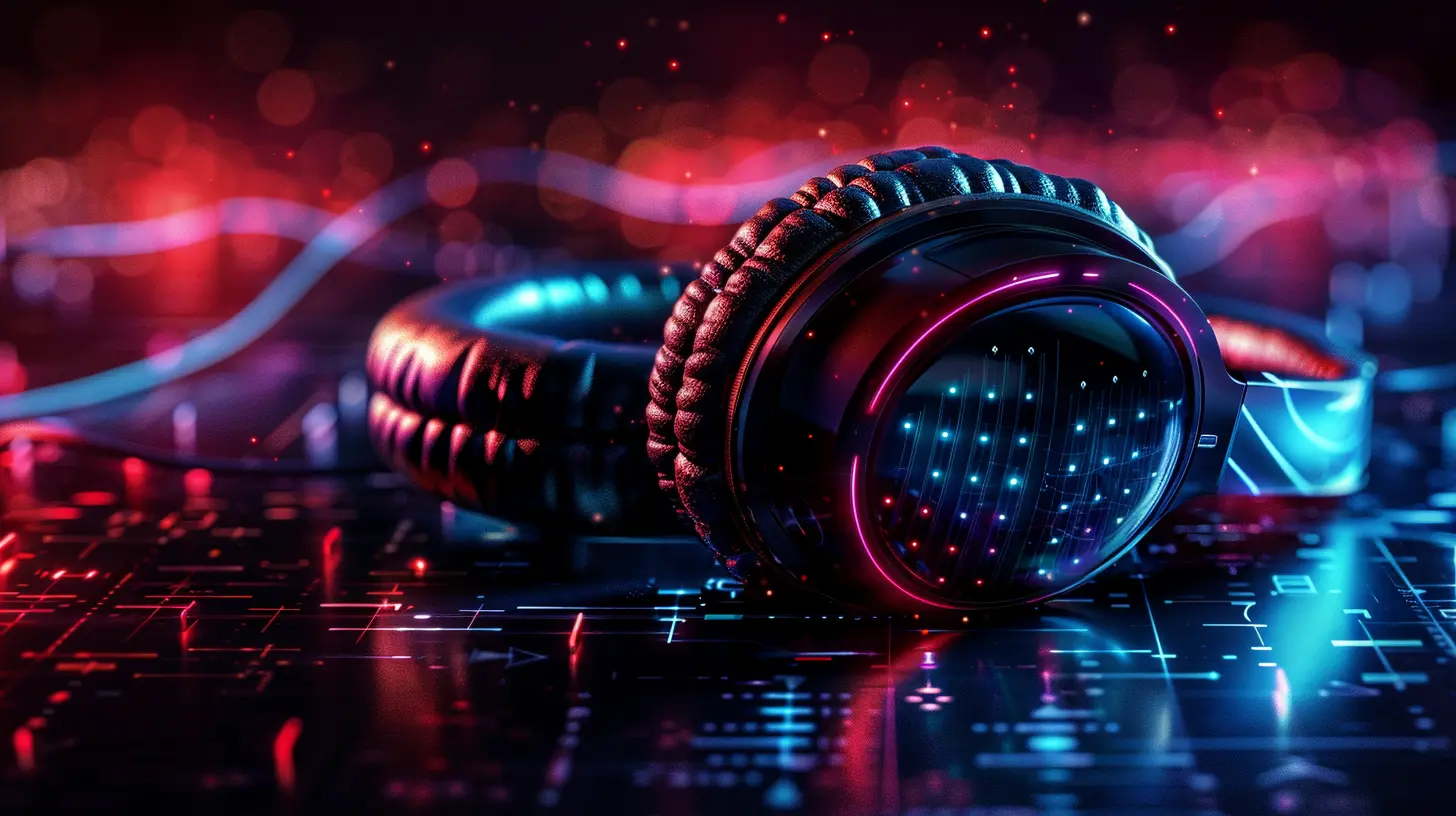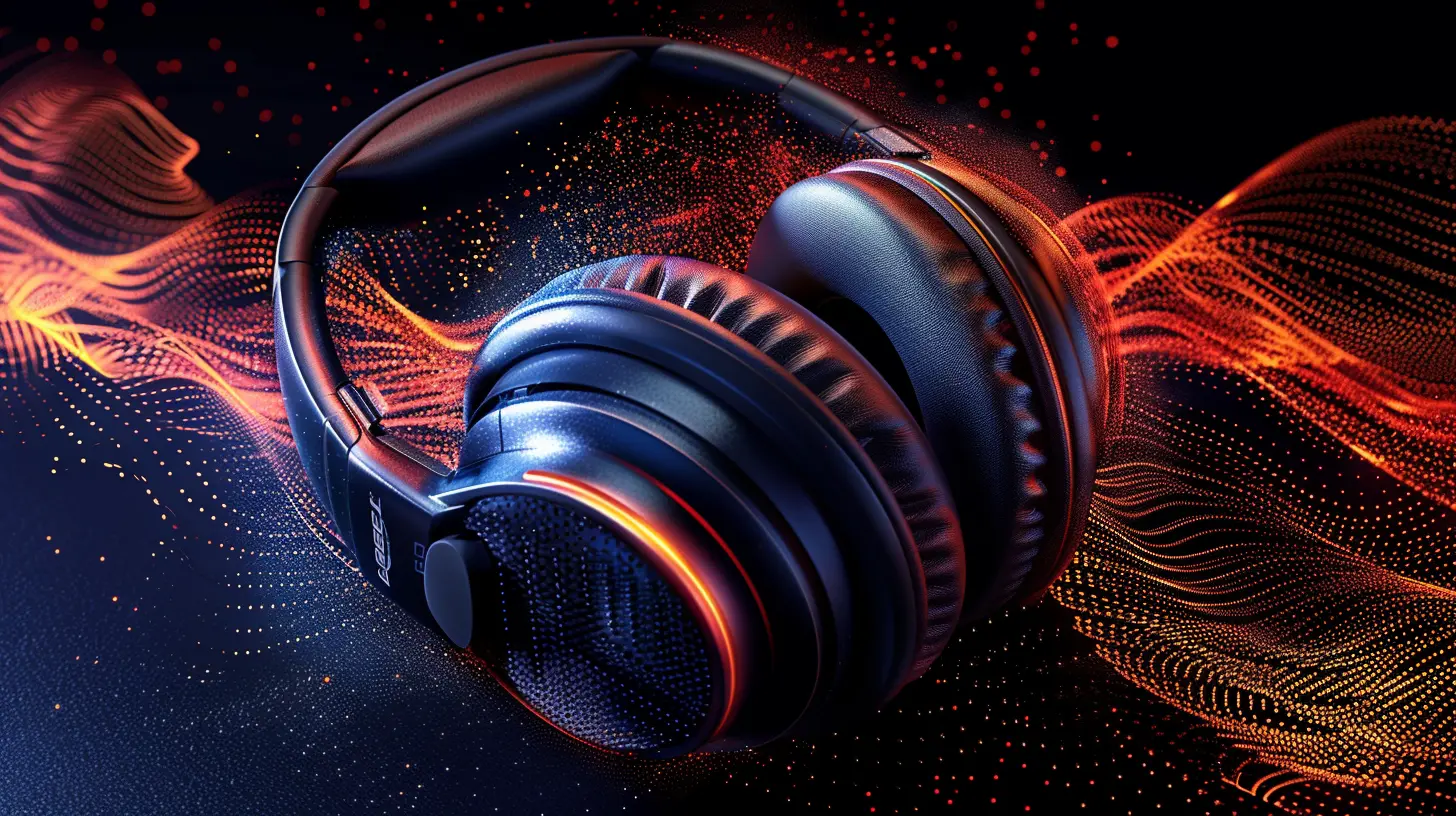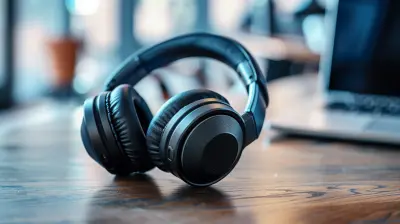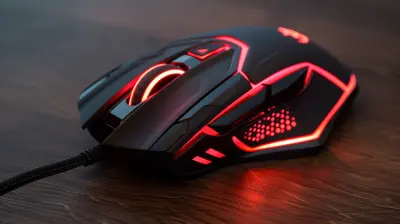The Science Behind Noise Isolation in Headphones
31 December 2024
In a world where we're constantly bombarded by sound — from the roar of city traffic to the hum of daily office chatter — it's no wonder that many people seek solace in their headphones. But not just any headphones will do the trick. If you're looking to block out the world, you'll need a pair with solid noise isolation. But have you ever wondered how these headphones manage to muffle external noise so effectively?
Today, we’re diving into the fascinating science behind noise isolation in headphones. By the end of this article, you’ll not just know what noise isolation is, but you’ll understand the deeper mechanics at play. So, let’s get started!

What is Noise Isolation?
Before we get too deep into the nitty-gritty, let’s clarify what noise isolation actually is. Essentially, noise isolation refers to the ability of headphones to block out external sounds. Think of it as creating a physical barrier between your ears and the surrounding environment.You might also hear terms like "passive noise cancellation" thrown around — that’s just another way of referring to noise isolation. It's "passive" because it doesn’t involve any electronic intervention (unlike its cousin, active noise cancellation, which we’ll touch on later). Instead, noise isolation relies on the design and materials of the headphones to insulate you from unwanted sounds.
But how does it all work? Let’s break it down.

The Principles Behind Noise Isolation
1. Sound Waves and Their Journey
To understand noise isolation, it’s crucial to first get a grip on how sound works. When someone is talking, or a car is honking, those sounds are created by vibrations. These vibrations travel through the air in the form of sound waves. When these waves hit your ears, they’re converted into signals that your brain interprets as sound.Noise isolation headphones work by interfering with the path those sound waves travel. Instead of letting them reach your ears directly, they block, reflect, or absorb the sound waves to a large extent.
2. Materials Play a Big Role
Have you ever wondered why some headphones feel extra snug or are made of thick materials? That’s not just for comfort — it’s part of the noise isolation game. The materials used in the ear cups and padding play a crucial role in blocking sound.For example, dense foam or memory foam padding can absorb sound waves, preventing them from reaching your ears. The thicker and denser the materials, the more sound they can block. It’s kind of like wearing heavy curtains to block out sunlight — the thicker the curtain, the less light gets through.
3. Seal and Fit — It’s All About That Fit
Even the best materials won’t do much good if the headphones don’t fit well. A snug, well-sealed fit is essential for effective noise isolation. If there’s a gap between your ear and the headphone, sound waves can sneak in.This is why over-ear headphones (which completely cover your ears) tend to offer better isolation than on-ear or in-ear models. Over-ear headphones create a tight seal around your ear, making it harder for external noise to creep in. It’s like closing a door versus leaving it slightly ajar — the tighter you close it, the less sound gets through.
In-ear headphones, especially those with silicone or memory foam tips, also offer excellent noise isolation. They essentially "plug" your ear canal, creating a seal that blocks out ambient sound. Think of it like wearing earplugs that also happen to play music.

External Noise vs. Noise Isolation
Let’s take a closer look at the types of external noise that noise-isolating headphones have to contend with:1. Airborne Noise
This is the most common type of external noise, and it’s exactly what it sounds like — sound that travels through the air. It could be anything from the chatter of people around you to the hum of an air conditioner. Noise isolation headphones are designed to keep this type of noise at bay by blocking the sound waves from entering your ears.2. Structure-Borne Noise
This type of noise is a bit trickier. It travels through solid objects rather than air. Think of the rumble you feel when a subway train passes by underneath your feet — that’s structure-borne noise. Noise isolation headphones can help reduce airborne noise, but they’re not particularly effective against structure-borne noise. For that, you’d likely need active noise-cancelling (ANC) technology, which actively cancels out these vibrations.
Active Noise Cancellation vs. Noise Isolation
Now, I know what you’re thinking: “Wait, isn’t active noise cancellation the same thing?” Not quite. While both noise isolation and active noise cancellation (ANC) aim to block out external noise, they go about it in very different ways.Noise Isolation (Passive Noise Cancellation)
As we’ve discussed, noise isolation is all about creating a physical barrier between your ears and external sound. It’s "passive" because it doesn’t require any electronics — just well-designed ear cups, padding, and a good fit.Active Noise Cancellation (ANC)
ANC, on the other hand, takes a more high-tech approach. Headphones equipped with ANC have built-in microphones that pick up external sounds. The headphones then generate sound waves that are the exact opposite (or inverse) of the external noise. When these "anti-noise" sound waves collide with the external sound waves, they cancel each other out. Think of it like two people trying to push a door open from opposite sides — their efforts cancel each other out, and the door stays shut.Which One is Better?
It’s not a matter of better or worse — it’s about what you need. If you’re in a relatively quiet environment and just want to block out occasional background noise, noise isolation headphones should do the trick. But if you’re frequently in very noisy environments (like airplanes or bustling offices), ANC headphones might be worth the investment. Some headphones even offer a combination of both passive and active noise cancellation for maximum effect.The Importance of Frequency in Noise Isolation
Not all sounds are created equal. Some frequencies are easier to block than others. Low-frequency sounds, like the rumble of an engine, are harder to block with noise isolation alone. That’s because these longer wavelengths can more easily penetrate barriers.High-frequency sounds, on the other hand, are much easier to block. These sounds have shorter wavelengths that are more easily absorbed by the materials in noise isolation headphones. So, if you’re dealing with a lot of high-pitched noise (like office chatter), noise isolation headphones will be quite effective. But if you’re trying to block out low-frequency sounds (like the drone of an airplane engine), you might need ANC to help out.
Pros and Cons of Noise Isolation Headphones
Like everything, noise isolation headphones come with their own set of advantages and drawbacks. Let’s take a look at both sides of the coin:Pros:
- No Batteries Required: Unlike ANC headphones, which require power to work their magic, noise isolation headphones work purely by design. You’ll never have to worry about running out of battery mid-flight.- Affordable: Because they don’t require complex technology, noise isolation headphones tend to be more affordable than their ANC counterparts.
- Natural Sound Quality: Since noise isolation doesn’t rely on electronics, there’s no risk of it interfering with the sound quality or introducing strange artifacts.
Cons:
- Less Effective Against Low-Frequency Noise: As we mentioned earlier, noise isolation can struggle with low-frequency sounds like engine noise or deep bass.- Comfort Can Be an Issue: To be truly effective, noise isolation headphones need to create a tight seal around your ears. This can sometimes lead to discomfort over long listening sessions, especially if the headphones are bulky or heavy.
How to Choose the Right Noise Isolation Headphones
So, how do you choose the perfect pair of noise isolation headphones? Here are a few tips to keep in mind:1. Look for a Comfortable Fit
As we've already discussed, fit is crucial. Make sure the headphones create a snug seal around your ears without being too tight. If you’re going for in-ear models, try different ear tip sizes to find the perfect match.2. Check the Materials
Look for headphones made with dense, high-quality materials that will absorb sound effectively. Memory foam ear cups are a great option, as they mold to the shape of your ears for a better seal.3. Consider Your Environment
Where do you plan on using your headphones the most? If you’re often in noisy environments, noise isolation alone might not be enough, and you might want to look for a pair that combines noise isolation with ANC.4. Test Them Out
Whenever possible, try before you buy. Everyone’s ears are different, and what works for one person might not work for another. Make sure the headphones are comfortable, effective at blocking noise, and offer the sound quality you’re looking for.
Conclusion
The science behind noise isolation in headphones is both fascinating and practical. By using materials, fit, and design, noise isolation headphones create a physical barrier that blocks external sound, allowing you to enjoy your music, podcasts, or videos without distractions. While noise isolation isn’t perfect for all environments — especially those with low-frequency noise — it’s a great, budget-friendly option for most everyday situations.So, the next time you slip on a pair of noise-isolating headphones and feel the outside world melt away, you’ll know exactly what’s going on behind the scenes.
all images in this post were generated using AI tools
Category:
HeadphonesAuthor:

John Peterson
Discussion
rate this article
18 comments
Kennedy Strickland
Great insights! Understanding noise isolation enhances our headphone experiences significantly.
February 4, 2025 at 7:44 PM

John Peterson
Thank you! I'm glad you found the insights valuable—noise isolation truly transforms our listening experience.
Wade McMichael
Noise isolation in headphones isn't just a luxury; it's essential. Whether you’re commuting or working, immersing yourself in pure sound transforms your experience. Don’t settle for distractions—demand technology that prioritizes your auditory bliss.
January 27, 2025 at 8:51 PM

John Peterson
Absolutely! Noise isolation is crucial for an optimal listening experience, allowing you to immerse yourself fully and enjoy sound without distractions. Thank you for highlighting its importance!
Celeste Strickland
Noise isolation: because sometimes the world needs a mute button—loudly!
January 22, 2025 at 5:15 AM

John Peterson
Absolutely! Noise isolation is essential for creating a focused listening experience, allowing you to escape the noise of the world and enjoy your audio without distractions.
Jude Perez
What a fascinating read! 🎧 The blend of science and sound technology in noise isolation is truly impressive. It's amazing how headphones can create our own little worlds of music and tranquility. Keep the great articles coming!
January 15, 2025 at 7:34 PM

John Peterson
Thank you so much for your kind words! I'm glad you enjoyed the article. Stay tuned for more fascinating topics! 🎧
Spike Collins
Great insights! Who knew headphones had such science? 🎧
January 8, 2025 at 8:52 PM

John Peterson
Thank you! I'm glad you found it interesting—there's definitely a lot more to headphones than meets the ear! 🎧
Thornewood Hardy
Great article! It’s fascinating to see the science behind noise isolation in headphones explained so clearly. This technology not only enhances our listening experience but also promotes personal well-being by creating a peaceful environment. Keep up the excellent work in sharing valuable insights!
January 6, 2025 at 1:57 PM

John Peterson
Thank you for your kind words! I'm glad you found the article insightful. Your support means a lot!
Sylvia McGivern
Great insights! Understanding noise isolation enhances our headphone choices significantly.
January 6, 2025 at 5:08 AM

John Peterson
Thank you! I'm glad you found the insights helpful in making informed headphone choices.
Solara Wyatt
Noise isolation: the only time I want to be cut off from the outside world—sorry, kids!
January 5, 2025 at 7:21 PM

John Peterson
Noise isolation can be a welcome escape, allowing for focused listening and a break from distractions—sometimes a little 'me time' is essential!
Lanae Wright
Great article! I appreciate the in-depth analysis of noise isolation technology in headphones. Understanding the science behind it really enhances our appreciation for sound quality. Looking forward to more insights on audio innovations!
January 5, 2025 at 4:03 AM

John Peterson
Thank you for your kind words! I'm glad you found the analysis insightful. Stay tuned for more on audio innovations!
Kayla Diaz
Fascinating insights! It's intriguing how different materials and technologies contribute to noise isolation. I wonder how emerging innovations, like adaptive sound profiles, might enhance our listening experiences even further. Excited to see how this field evolves!
January 4, 2025 at 8:31 PM

John Peterson
Thank you! I'm glad you found the insights intriguing. Emerging technologies like adaptive sound profiles indeed hold great promise for enhancing our listening experiences. It will be exciting to see how these innovations shape the future of headphones!
Liv McFarland
In a world where silence sings, Noise isolation cradles our thoughts, Crafted wonders, a sound cocoon, Where chaos fades, and clarity blooms. Through science and design, we find our peace, Lost in melodies, each note a release, Headphones weave a tranquil embrace.
January 4, 2025 at 1:14 PM

John Peterson
Thank you for your poetic reflection! It beautifully captures the essence of noise isolation and its impact on our auditory experience.
Ariadne Weber
Great read! It’s fascinating how technology transforms our listening experience. Noise isolation really makes a difference, especially when trying to tune out the world. Thanks for the insights!
January 3, 2025 at 9:42 PM

John Peterson
Thank you! I'm glad you found it insightful. Noise isolation truly enhances our listening experience by creating a more immersive environment.
Fletcher McGehee
Great article! The exploration of noise isolation techniques in headphones sheds light on how different materials and designs impact audio experiences. Understanding these scientific principles not only enhances our appreciation for headphone technology but also guides consumers in making informed choices.
January 3, 2025 at 11:50 AM

John Peterson
Thank you for your insightful comment! I'm glad you found the article helpful in understanding how materials and design influence audio experiences.
Sara Hodge
Impressive insights on noise isolation technology; enhances listening experience significantly!
January 2, 2025 at 7:45 PM

John Peterson
Thank you! I'm glad you found the insights valuable!
Heath Bowman
Delve into the unseen world of sound: can noise isolation unlock secrets of auditory perception?
January 1, 2025 at 9:10 PM

John Peterson
Absolutely! Noise isolation not only enhances listening experiences but also reveals how our brains prioritize and interpret sounds, providing deeper insights into auditory perception.
Zacharias Wheeler
Great article! It’s fascinating how science makes our listening experiences so much better. Noise isolation in headphones is like having your own personal bubble of sound. Here’s to enjoying our favorite tunes without distractions—turn it up and tune the world out! 🎧✨
January 1, 2025 at 1:38 PM

John Peterson
Thank you! I'm glad you enjoyed the article. It's amazing how technology enhances our listening experiences. Cheers to immersive sound! 🎶✨
Phaedra Hines
Great read! The insights on noise isolation technology are fascinating and highly informative. It's impressive to see how advancements in engineering enhance our listening experiences. Looking forward to more articles exploring the science behind audio innovations!
January 1, 2025 at 3:42 AM

John Peterson
Thank you for your kind words! I'm glad you found the article insightful. Stay tuned for more on audio innovations!
Zariah Hall
Noise isolation isn’t just a feature; it's a necessity. In a world drowning in distractions, headphones that deliver true sound clarity without interruption are essential. Invest wisely—your eardrums deserve the best!
December 31, 2024 at 9:48 PM

John Peterson
Absolutely! Noise isolation is crucial for a quality listening experience, allowing you to fully appreciate sound clarity without external distractions. Thanks for highlighting its importance!
MORE POSTS

How Battery Tech is Boosting the Performance of IoT Devices

Wearable Tech for Outdoor Adventures: Gadgets to Take on Your Next Trip

Wearable Tech and the Internet of Things: A Seamless Connection

How Cybersecurity is Adapting to Quantum Computing

The Future of Big Data in Predictive Analytics

The Best Wireless Headphones for Home Entertainment Enthusiasts

The Growing Trend of Gamified Finance: Making Money Management Fun

The Future of 5G: How It Will Transform Internet Connectivity

The Threat of Cyber Espionage: When Hackers Become Spies

Gaming Mice Reviewed: Which Models Offer the Best Precision and Comfort?

Design and Performance: The Balance of Modern Ultrabooks